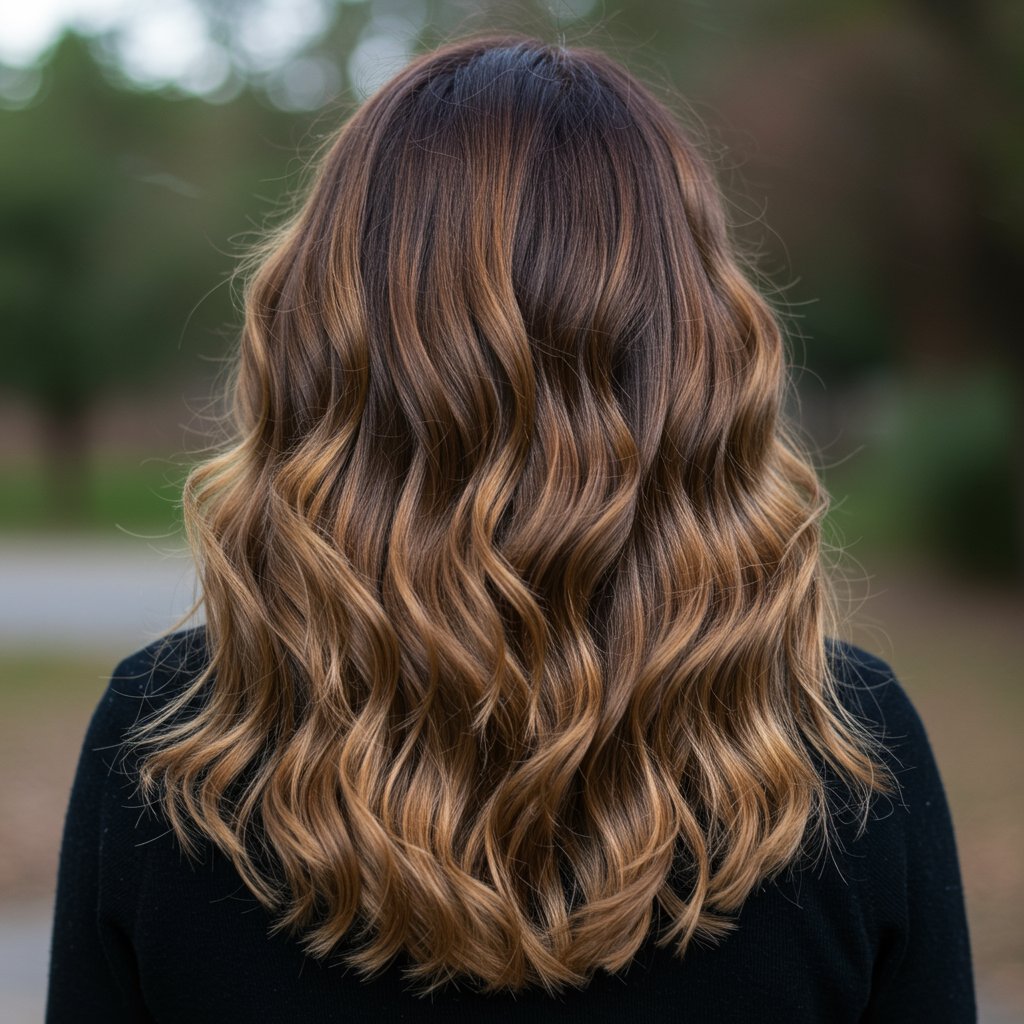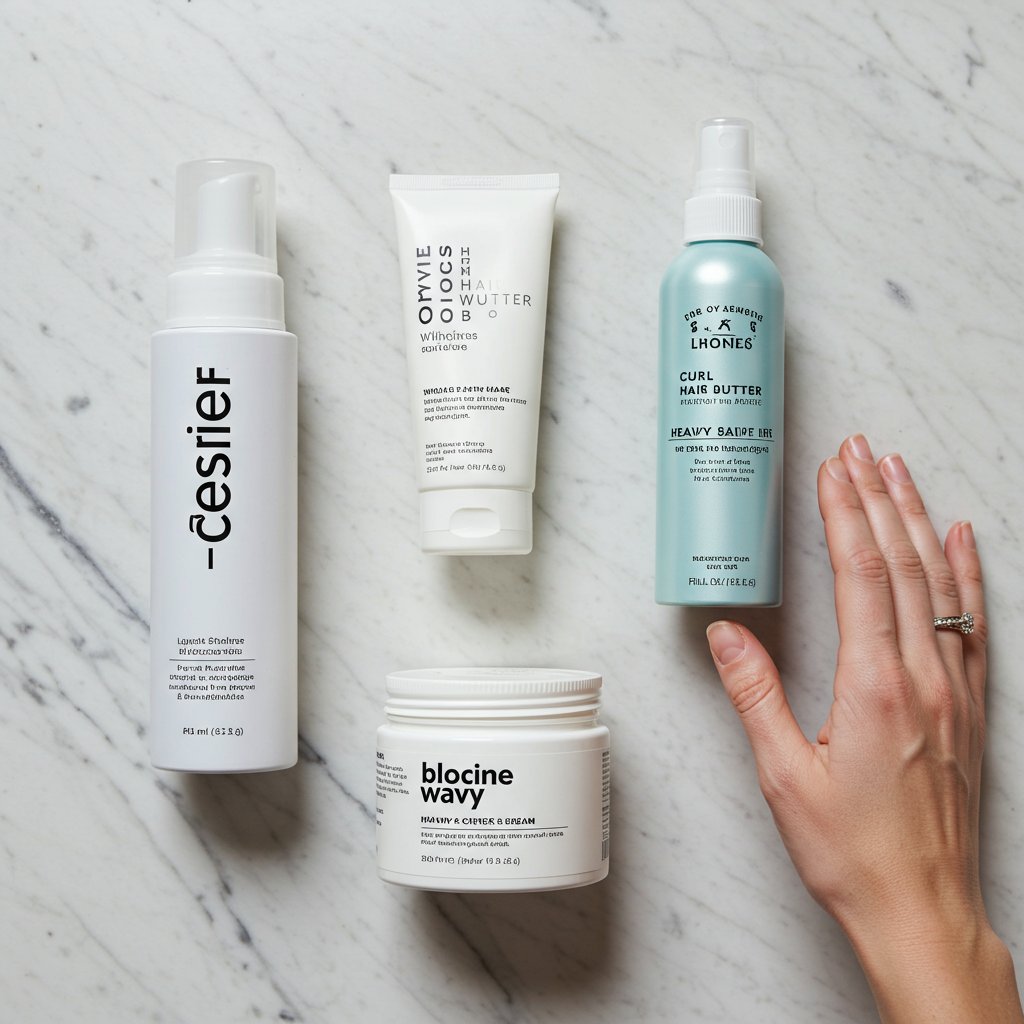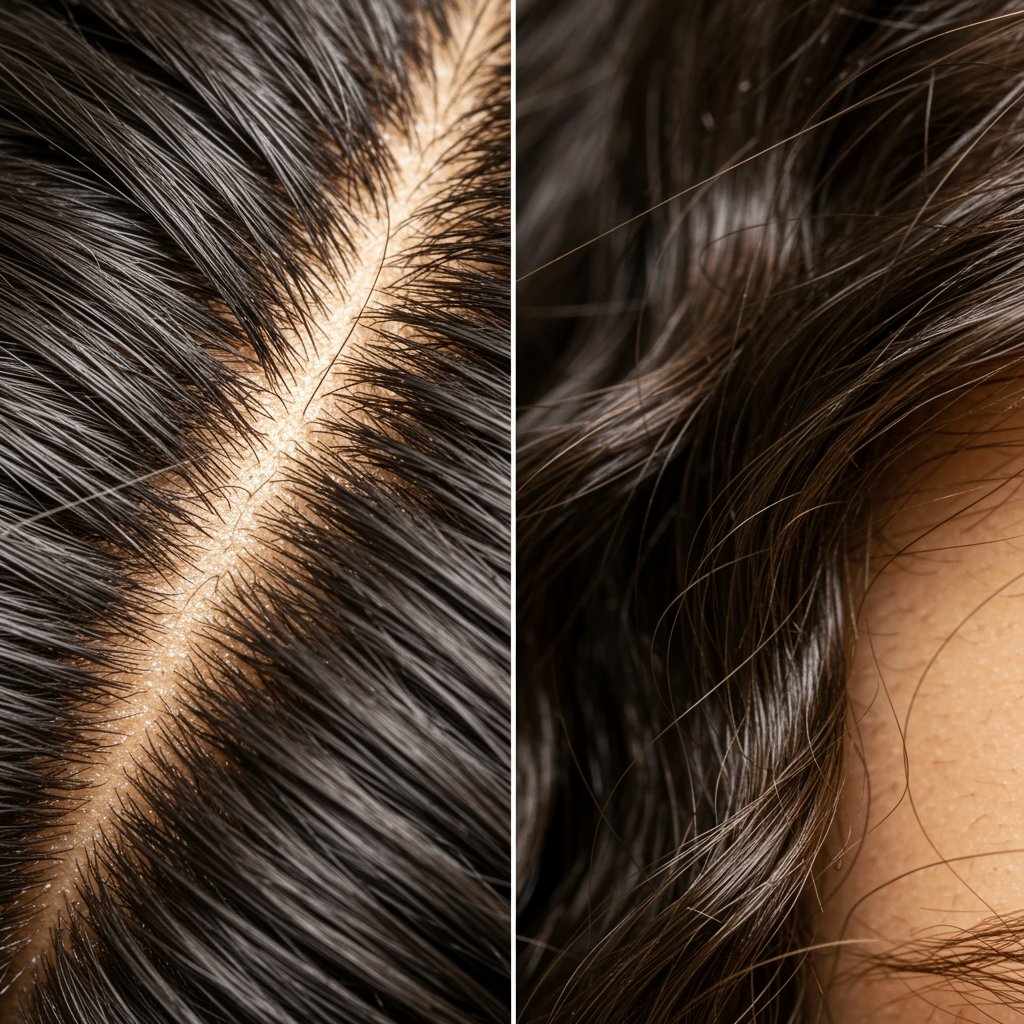The Unique Challenges of Caring for Wavy Hair | A Guide to Taming the In-Between Texture
Introduction: Embracing the Beauty of the In-Between
Wavy hair, the gorgeous texture that sits gracefully between straight and curly, possesses a unique charm and versatility. It can be coaxed into sleek styles or encouraged into bouncy curls, offering a world of possibilities. However, this in-between nature is precisely what introduces a distinct set of hurdles. One of the most significant challenges of caring for wavy hair is that it doesn't fit neatly into the care routines designed for straight or curly types. It requires a specialized approach, a delicate balance of moisture and hold, and a deep understanding of its often-unpredictable personality.

Many people with wavy hair spend years thinking their hair is just 'frizzy and unruly' straight hair, or 'lazy' curly hair. The reality is that type 2 hair (A, B, and C) has its own rulebook. From battling relentless frizz brought on by a hint of humidity to dealing with wave patterns that change on a whim, managing this hair type can feel like a full-time job. This guide is dedicated to exploring these specific difficulties, demystifying why they occur, and providing you with the knowledge to transform your relationship with your waves from one of frustration to one of confident mastery.
Understanding these unique challenges is the first step toward unlocking your hair's true potential. It's about learning to work with your hair's natural tendencies, not against them. By acknowledging the specific needs of your waves, you can build a routine that enhances definition, minimizes frizz, and promotes long-term hair health, allowing you to fully embrace the effortless beauty of your natural texture.
Challenge 1: The Constant Battle with Frizz
If there's one universal struggle for those with wavy hair, it's frizz. Wavy hair strands have a slight bend or 'S' shape, which means the cuticle layers on the outer surface of the hair shaft don't lie as flat as they do on straight hair. This slightly raised cuticle is an open door for moisture from the air (humidity) to enter the hair shaft, causing it to swell and create that dreaded frizzy halo. This structural characteristic makes wavy hair inherently more susceptible to environmental factors.

This predisposition to frizz is exacerbated by a lack of internal moisture. Dehydrated waves are constantly seeking moisture from the atmosphere, which is why humid days can be a wavy-haired person's worst nightmare. The hair essentially panics, trying to absorb any available water, which leads to swelling and frizz. Furthermore, common habits like harsh towel drying, using shampoos with sulfates, or overusing heat tools can strip the hair of its natural oils, further dehydrating it and roughing up the cuticle, creating a perfect storm for frizz.
Effectively managing this challenge involves a two-pronged approach: infusing the hair with deep, lasting hydration and sealing the cuticle to lock that moisture in and keep humidity out. This means choosing moisturizing, sulfate-free cleansers, never skipping conditioner, and incorporating leave-in treatments and stylers that form a protective barrier. It's not just about fighting frizz on a bad hair day; it's about building a foundational routine that keeps your hair so well-hydrated that it's less reactive to environmental changes.
Challenge 2: The Mystery of Inconsistent Wave Patterns
One of the most perplexing challenges of caring for wavy hair is its lack of uniformity. It's incredibly common for someone to have a mix of 2A, 2B, and even 2C waves all on the same head. The under-layers might be beautifully defined and almost curly, while the top canopy layer is much looser or even straight. This inconsistency makes styling a complex puzzle. Do you use a heavy product to encourage the looser sections, risking weighing down the more defined waves? Or do you use a lightweight product and accept that some parts will be less defined?

This inconsistency can be caused by a variety of factors. The top layer of hair is more exposed to the elements—sun, wind, and pollution—as well as mechanical damage from styling, which can loosen the wave pattern over time. The weight of the hair itself can also be a factor, often pulling the roots straight while allowing the ends to wave or curl. Hormonal shifts, medication, and even the mineral content of your water can influence and alter your wave pattern, adding another layer of unpredictability to your daily routine.
To manage this, strategic product application and styling techniques are key. You might need to 'spot treat' different sections of your hair, applying a stronger hold product like a gel to looser waves and a lighter cream or mousse to areas that curl up easily. Techniques like finger coiling or using clips at the root while drying (root clipping) can help encourage a more uniform pattern. A knowledgeable stylist can also create a haircut with strategic layers that removes weight and encourages the waves to spring up more consistently throughout your hair.
Challenge 3: The "Goldilocks" Product Problem
Wavy hair lives in a frustrating middle ground when it comes to hair products. Products formulated for straight hair are often too light; they may offer some smoothing benefits but provide zero hold, leaving waves to fall flat and become frizzy within hours. On the other hand, the rich butters, heavy oils, and thick creams designed for coily and very curly hair are typically far too heavy for the finer texture of most waves. This is the 'Goldilocks' dilemma: finding products that are just right.

Using products that are too heavy can lead to a host of issues. The most common is that the waves are weighed down, looking stretched out, limp, and lifeless rather than bouncy and defined. Heavy products can also lead to greasy-looking hair and rapid product buildup on the scalp and strands, which in turn dulls the hair and can necessitate more frequent, harsher washing, creating a vicious cycle of stripping and over-moisturizing. This makes the product selection process a constant experiment of trial and error.
Success lies in finding lightweight yet effective formulations. Look for products specifically marketed for wavy hair, or borrow from the curly world with caution. Lightweight leave-in conditioners, water-based gels, foams, and mousses are often the heroes for wavy hair. These products can provide the necessary moisture and hold to define wave patterns and fight frizz without adding the excess weight that leads to flat, greasy hair. The key is to read ingredient lists and prioritize products that offer hydration and hold without heavy oils or butters high on the list.
Challenge 4: Greasy Roots and Thirsty Ends
The unique structure of wavy hair directly impacts how natural oils, or sebum, are distributed from the scalp. On straight hair, sebum travels easily down the smooth shaft, moisturizing the entire length of the hair. On wavy hair, the gentle S-curves create obstacles. The oil struggles to navigate the bends and turns, often accumulating at the scalp while the mid-lengths and ends are left deprived of this natural conditioning agent.

This results in the classic and frustrating combination of an oily, sometimes weighed-down scalp and dry, brittle, and frizz-prone ends. This presents a significant cleansing challenge. How do you effectively cleanse the scalp to remove excess oil and prevent buildup without further stripping the already-dry ends? Using a harsh, clarifying shampoo might feel good on the roots but can be disastrous for the lengths of your hair, leading to more frizz and potential breakage.
The solution requires a targeted approach. One effective method is to pre-treat your ends with a lightweight oil or conditioner before you shampoo. This protects them from the stripping effects of the cleanser. When you wash, concentrate the shampoo on the scalp, massaging it in thoroughly, and allow the suds to gently rinse through the ends without direct scrubbing. Then, focus your conditioner from the mid-lengths to the ends, avoiding the root area. Additionally, incorporating a regular clarifying wash (perhaps once every few weeks) followed by a deep conditioning treatment can help reset the balance, removing buildup from the scalp while delivering intense moisture to the ends.
Challenge 5: Navigating Tangles and Breakage
While not as prone to knotting as very curly hair, the texture of wavy hair creates the perfect environment for tangles to form. The individual strands don't lie flat against each other; instead, they crisscross and intertwine, leading to knots, especially at the nape of the neck or on the underside of the hair. Wind, sleeping, or even wearing a textured scarf can quickly turn soft waves into a tangled mess.

The primary danger with these tangles is breakage. The instinct to rip a brush through dry, tangled wavy hair is a recipe for disaster. Dry brushing disrupts the wave pattern, creates a cloud of frizz, and, most importantly, can stretch the hair past its breaking point, causing split ends and mechanical damage. Detangling wavy hair requires patience and the right tools. It should almost always be done when the hair is wet and saturated with conditioner, which provides 'slip' to help knots gently unravel.
To minimize tangles and subsequent breakage, protective measures are essential. Using a wide-tooth comb or your fingers to detangle in the shower while conditioner is in your hair is the gentlest method. Outside of the shower, sleeping on a silk or satin pillowcase reduces friction overnight, preventing sleep-induced tangles. If you need to detangle dry hair, use a small amount of oil or leave-in conditioner on the knot and work it out gently with your fingers first, before attempting to use a comb.
Challenge 6: The Elusive Second-Day Refresh
For many with wavy hair, wash day can result in beautiful, defined waves. The real challenge arrives on day two, three, and beyond. Waves are delicate. Sleeping on them, putting them in a ponytail, or simply existing can cause them to stretch out, flatten, and lose their definition. Unlike curlier hair types that often have a more robust 'spring factor,' waves can easily lose their shape, leaving you with a dilemma: do you commit to a full re-wash and style, or is there a way to revive them?

The process of refreshing is a delicate art. Simply spritzing hair with water can sometimes reactivate the product from the day before, but it can also lead to frizz if not done correctly. Using too much refresh spray or adding more product can quickly make the hair feel sticky, crunchy, or greasy. It's easy to go from trying to revive your waves to needing to wash your hair all over again. Finding a technique that brings back definition without creating a product-y mess is one of the biggest learning curves in a wavy hair journey.
Successful refreshing often involves less product than you think. A fine mist of water, perhaps mixed with a tiny amount of leave-in conditioner, can be enough to dampen the hair slightly. From there, you can gently scrunch the hair to encourage the waves to reform. Some people have success spot-treating unruly sections by wetting them down more thoroughly and finger-coiling them. The key is to use minimal product and a light touch, then allow the hair to air dry or use a diffuser on a low speed/low heat setting for just a few minutes to set the refreshed pattern.
Pro Tips for Conquering Wavy Hair Challenges
Navigating the world of wavy hair care can feel complex, but with the right techniques, you can overcome its unique challenges. Here are some professional tips to help you achieve consistent, healthy, and beautiful waves.

Hydration is Non-Negotiable
Since frizz and dryness are top concerns, focus on hydration at every step. Use a sulfate-free, moisturizing shampoo and a silicone-free conditioner. Once a week, treat your hair to a deep conditioning mask. Leave it on for 20-30 minutes—you can even add gentle heat by wrapping your hair in a warm towel to help the product penetrate more deeply. Hydrated hair is smoother, shinier, and less prone to frizz.Master Your Application Technique
How you apply your products is just as important as the products themselves. Always apply styling products to soaking wet hair. This helps to evenly distribute the product and form defined wave clumps. Try the 'praying hands' method (smoothing product down the hair shaft between your palms) or 'roping' to apply product without disturbing your natural wave pattern. Finish by gently scrunching towards the scalp to encourage definition.Protect Your Waves While You Sleep
Nighttime is when waves are most vulnerable to being flattened and tangled. Preserve your style by loosely gathering your hair on top of your head in a 'pineapple' using a gentle tie like a silk scrunchie or an invisibobble. This protects the length of your hair. Sleeping on a silk or satin pillowcase is a game-changer, as it reduces friction and helps retain moisture, preventing both frizz and tangles.Choose the Right Cut
Don't underestimate the power of a good haircut. Long, one-length cuts can weigh down waves, pulling them straight at the top. Strategic, long layers can remove bulk and weight, allowing your waves to spring up and have more movement and definition. Communicate with an experienced stylist who understands how to cut wavy hair to enhance its natural texture, not fight it.Frequently Asked Questions About Wavy Hair Care
Q1: Why is my hair straight when wet but wavy when dry?
This is completely normal for wavy hair! The weight of the water pulls your hair straight. As the water evaporates during the drying process, your hair's natural 'S' pattern reveals itself. This is why applying styling products to wet hair is so crucial—it helps to capture and hold that pattern as it forms.
Q2: How often should I wash my wavy hair?
This varies depending on your hair's density, porosity, and your scalp's oil production. However, most people with wavy hair find that washing every 2-4 days is a good balance. Washing too often can strip the hair of necessary oils, while waiting too long can lead to buildup and weighed-down roots.Q3: Can I brush my wavy hair when it's dry?
It is generally not recommended to brush wavy hair when it is dry. Doing so will break up your wave clumps, disrupt the pattern, and create a lot of frizz. The best time to detangle is in the shower with a wide-tooth comb when your hair is full of conditioner.Q4: What's the difference between mousse and gel for wavy hair?
Mousse is a lightweight foam that is excellent for adding volume and providing a soft, touchable hold. It's great for finer waves that get easily weighed down. Gel typically provides a stronger hold, which is better for controlling frizz and defining waves that tend to fall flat. Many people layer them, using mousse for volume at the roots and gel for hold on the lengths.Q5: Why do my waves fall flat by the end of the day?
This is usually due to one of three things: your hair needs more hold, your products are too heavy, or your hair is over-moisturized. Try using a product with a stronger hold, like a hard-hold gel. If you suspect heavy products are the culprit, switch to more lightweight options. If your hair feels overly soft and mushy, you may have 'moisture overload' and could benefit from a protein treatment to add structure back to your strands.Q6: Can a professional stylist really help with my wavy hair?
Absolutely. A stylist who is experienced with wavy and curly hair textures can provide a customized cut that enhances your natural pattern. They can also offer personalized product recommendations and styling lessons, helping you troubleshoot your specific challenges and build a routine that works for you, saving you time and frustration in the long run.Conclusion: The Rewarding Journey of Understanding Your Waves
Caring for wavy hair is undoubtedly a journey filled with unique challenges, from fighting the daily battle with frizz to solving the puzzle of an inconsistent curl pattern. It requires patience, experimentation, and a willingness to listen to what your hair truly needs. The frustrations of dealing with greasy roots and dry ends, or waking up to flattened second-day hair, are real and valid. Yet, within these challenges lies an opportunity for a deeper connection with your natural self.

By understanding the science behind why your waves behave the way they do, you can move from a place of conflict to one of collaboration. Each challenge has a solution rooted in the principles of proper hydration, gentle handling, and the use of products that are perfectly balanced for your in-between texture. The journey to happy, healthy waves is not about forcing them to be something they're not, but about providing them with the right environment to thrive.
Embrace the process. Celebrate the small victories—the first time you achieve a perfect cast, the day your refresh actually works, or the moment you find your holy grail product. Your waves are a unique and beautiful part of you, and learning to care for them is a rewarding act of self-care that allows their true, effortless beauty to shine through.


